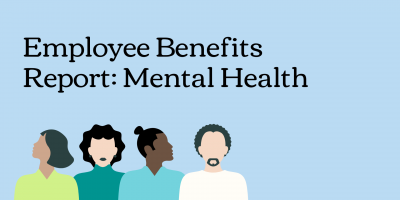
Mental Health Training for Employees
The current state of mental health is in dire need of improvement. Mental health training for employees emerges as a solution in the workplace, especially when it’s rooted in empathy and acceptance.

In my experience as an HR tech company founder and former CFO (three times) and COO (twice), I’ve observed several common behaviors and actions that signify a toxic work environment.
One of the most prevalent issues is a lack of effective communication.
When employees feel that information is withheld or that their voices are not heard, it can lead to confusion and frustration.
Micromanagement is another concerning behavior that often contributes to toxicity. Overbearing control and a lack of trust in employees can stifle creativity and autonomy, causing dissatisfaction among the workforce.
Additionally, any form of bullying, discrimination, or harassment is a clear indication of a toxic work environment. Such behaviors, whether they manifest as verbal abuse, intimidation, or offensive comments, can be deeply harmful to employees’ well-being and job satisfaction.
Unrealistic expectations and constantly shifting priorities are also typical in toxic workplaces, leading to stress and burnout.
Lastly, the failure to recognize and reward employees for their efforts can leave them feeling undervalued and demotivated.

Employees facing a toxic work environment often find themselves in challenging situations, but there are constructive steps they can take to address the issue.
Documenting incidents is a crucial first step, as it provides a clear record of toxic behaviors, including dates, times, and individuals involved. This documentation can be a valuable resource should they need to escalate the issue.
Seeking support from colleagues, friends, or mentors can provide emotional assistance and guidance during difficult times.
Additionally, employees should consider initiating an open and honest conversation with their immediate supervisor or HR department to address their concerns. Many companies offer resources such as Employee Assistance Programs (EAPs) or counseling services to help employees cope with workplace stress and toxicity.
Others are beginning to offer health and wellness stipends that can be used to support each employee’s unique mental health needs.
Lastly, employees should familiarize themselves with labor laws and company policies related to harassment and discrimination to ensure they understand their rights and avenues for recourse.

As a leader and CEO, I believe that leaders and management hold a significant responsibility in shaping the work environment and mitigating toxicity.
Leading by example is paramount.
Demonstrating respectful and inclusive behavior sets the tone for professionalism and ethical conduct throughout an organization.
Establishing – and actively using – clear communication channels and encouraging open, transparent dialogue helps address concerns proactively.
Promoting a healthy work-life balance demonstrates a commitment to employee well-being and can prevent burnout and stress. This means ensuring your employees feel safe enough to take their PTO or a day off for mental health (or other reasons) when needed.
It also means allowing them to set boundaries so they can log off after work and disconnect on the weekends without having to check email and instead be fully present in their personal lives.
You want to create a space in which they feel truly supported so they can always bring their best selves to work.
Offering training on diversity, inclusion, and conflict resolution to employees and managers can foster a more inclusive and understanding workplace. Consistently enforcing anti-harassment and anti-discrimination policies is essential, and taking swift action when violations occur demonstrates commitment to a safe and respectful workplace.
Seeking regular feedback from employees through surveys or anonymous channels helps identify areas of concern, and investing in employee development and mentorship programs can create a positive work culture that discourages toxic behaviors.
When toxic behavior is identified, addressing it promptly and fairly through appropriate disciplinary measures is crucial to maintaining a healthy work environment.

Identifying and addressing toxicity in the workplace requires a collective effort from both employees and leadership.
By fostering a culture of respect, communication, and support, organizations can mitigate toxic behaviors and create a more positive and productive work environment.

Founder & CEO of Compt
Browse our curated list of vendors to find the best solution for your needs.
Subscribe to our newsletter for the latest trends, expert tips, and workplace insights!

The current state of mental health is in dire need of improvement. Mental health training for employees emerges as a solution in the workplace, especially when it’s rooted in empathy and acceptance.

There are many ways to explain what a workaholic is – the most superficial portrayal is someone who can’t stop working. But when it comes to mental well-being, work engagement, and overall health, is workaholism a good or a bad thing?

Amid rising chaos, nearly half of all Americans face mental health challenges—how are businesses stepping up to meet the growing demand for support?

How important is building relationships and social wellbeing to our health? Do social connections translate to a more satisfying and productive work experience?
Used by most of the top employee benefits consultants in the US, Shortlister is where you can find, research and select HR and benefits vendors for your clients.
Shortlister helps you reach your ideal prospects. Claim your free account to control your message and receive employer, consultant and health plan leads.